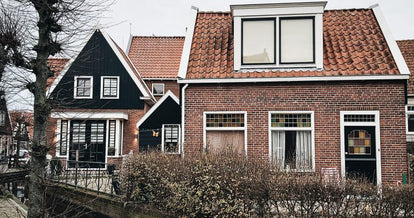
Pitched Roof Extension: What You Need To Know
Posted on 22 June, 2021
Extending your property is a great way to add space or value to your home. When choosing a roof option, you’re faced with either a pitched or a flat roof, both have their pros and cons. Here we’ll talk you through pitched roofing and some frequently asked questions. For flat roofing, take a look at our guide on building a flat roof system.
What Is A Pitched Roof Extension?
A pitched roof extension is simply an extension built with a pitched roof as opposed to a flat roof. A pitched roof is generally what you will find on most homes in the UK, which you can then replicate if you choose to build an extension on to your property.
Why Choose A Pitched Roof?
There are many advantages to choosing this type of roof for an extension. A pitched roof may last longer than a flat, due to the materials used being more hardwearing. You may also want to keep the look of the extension in-line with the rest of your property, in which case, a pitched style will offer you a more traditional appearance than a flat roof. You also have the option of adding skylights or roof windows, which can help bring more light into the room. Higher ceilings are also another benefit of pitched roofing, which can help create the feel of more space.
Flat Roof Vs Pitched Roof
Each has its advantages, below are some of the key pros and cons for flat roofs and pitched roofs.
Flat Roof Advantages –
- Costs of such are generally lower than a pitched roof
- They are often quicker to install than pitched designs
- They provide a streamlined, contemporary look, which may be more in fitting with your property.
Flat Roof Disadvantages –
- Flat roofs often have a lower ceiling height than pitched roofs
- They tend to have shorter lifespans than a pitched roof
- Can often be less energy efficient, so you may lose more heat through a flat roof than a pitched design.
Pitched Roof Advantages –
- Higher ceilings, creating the feel of more space
- Less heat loss, with the ability to install insulation
- Generally longer lasting than a flat roof
Pitched Roof Disadvantages –
- Tends to be more expensive than flat roof installation
- Build time may be longer than flat roofing
- May not be granted planning permission, depending on dimensions and space available
Do You Need Planning Permission For A Pitched Roof Extension?
Most pitched roof extensions will require planning permission. You will need to provide information on the dimensions you wish to extend by as well as the tile and materials you are using. If you are not sure whether you need planning permission on your extension, seek advice from your local planning authority or council office.
Can I add a roof window or skylight without planning permission?
Adding a skylight or roof window is a great way to bring light into your extension and create the feel of more space. If you are making alterations to your current pitched roof extension, then you may not need to get planning permission to add a roof window or skylight, depending on how far the window projects. Again, if you aren’t sure, it’s always best to speak to your local planning office to avoid any errors or costly mistakes.
Can I convert a flat roof into a pitched roof?
Most flat roofs can be converted into a pitched roof. There are several ways to do this, depending on the state of the current flat roof. You could potentially build a pitched roof over the existing flat roof or add another floor above it and then install a pitched roof. The options available may differ depending on your property design. A professional will be able to survey your current structure and explain which is the best option for you.
What is the minimum angle for a pitched roof?
A traditional pitched roof usually has an angle of around 30 to 50 degrees. Although a low pitched roof would tend to have an angle of around 20 degrees, whilst a very low pitch would be around 15 degrees. The angle you require will be dependent on the materials or tiles used as well as the design and structure you have planned.
Why do I need a breathable roofing membrane?
Installing breathable roofing membrane offers water resistance on a pitched roof and can help protect the ingress of water, which can reduce the chances of damp and mould.
Waterproofing Pitched Roofs
You must waterproof your pitched roof to prevent damp from occurring, which could potentially lead to structural damage. There are several options when it comes to waterproofing pitched roofs, including, breathable roofing membrane, acrylic roof coating, liquid roof repair, solvent-based roof coating membrane and flashing tape.
Insulation For Pitched Roofs
For a more energy-efficient pitch roof, you will want to consider insulation. This can help reduce heat loss, which can create a much warmer space and may even help reduce your heating bills. If you are looking to install insulation for a pitched roof, you may be able to take advantage of the Government’s recent Green Homes Grant. Further eligibility information and what’s covered can be found here.
Always seek advice from a professional before beginning any extension work on your property. For further information on roofing, take a look at our other blog posts linked below.
Related Articles –